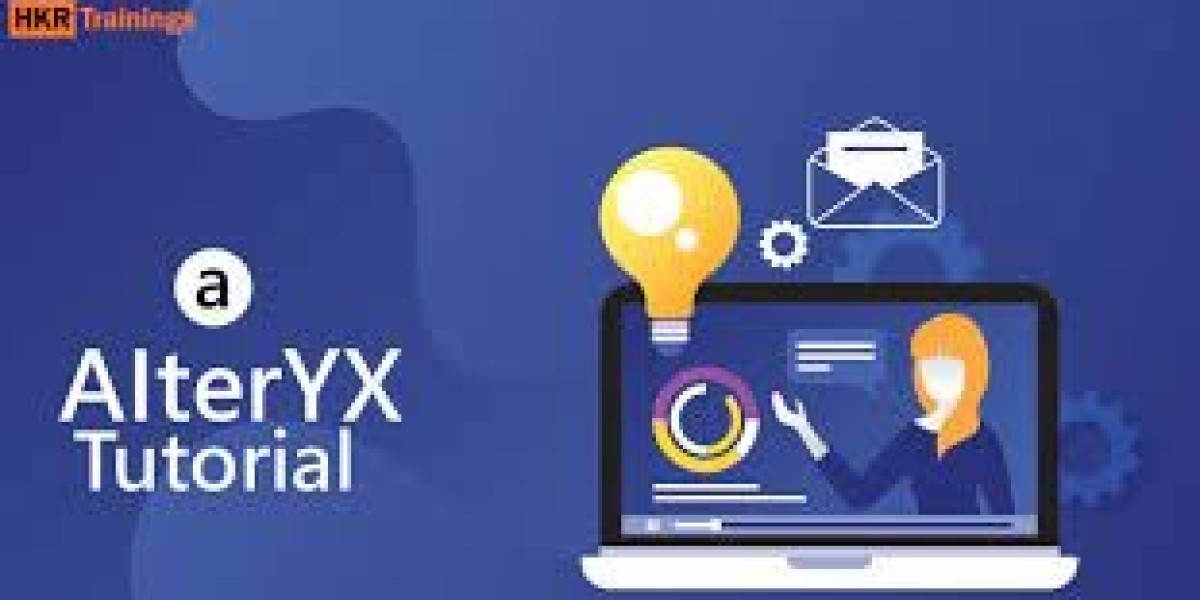In today's data-driven world, businesses are constantly striving to extract insights from their vast amounts of data. However, with the sheer volume and complexity of data available, it can be challenging to analyze it effectively. This is where Alteryx comes in – as a powerful self-service analytics platform that helps users prepare, blend, and analyze complex datasets.
If you're new to Alteryx or want to learn more about its capabilities, this tutorial is for you. In this article, we'll provide an overview of Alteryx and walk you through some essential features and functionalities that will help you get started with this powerful tool. So, let's dive in!
What is Alteryx?
Alteryx is a powerful data preparation and analytics platform that enables users to blend, clean, and analyze data from various sources. It provides a visual workflow interface that allows users to build complex data processing pipelines without the need for coding..
Interested in learning Alteryx? Join HKR and Learn more about Alteryx Tool from the Alteryx Online Training!
Here's an overview of some key tools and features in Alteryx:
Input/Output Tools: Alteryx supports various data sources, including files (CSV, Excel, etc.), databases (SQL Server, Oracle, etc.), cloud platforms (Amazon S3, Google BigQuery, etc.), and more. The Input Data tool allows you to bring data into Alteryx, while the Output Data tool lets you save the processed data.
Data Transformation Tools: Alteryx offers a wide range of tools for data transformation and manipulation. These include tools for filtering, sorting, joining, aggregating, pivoting, and summarizing data. The Formula tool allows you to create new columns, perform calculations, and apply advanced functions.
Data Cleansing Tools: Alteryx provides tools for data cleaning and standardization. You can use tools like the Cleanse tool to remove duplicates, the Data Cleansing tool to fix inconsistencies, and the Parse tool to extract specific elements from text data.
Spatial Analytics: Alteryx has built-in capabilities for spatial analytics, allowing you to work with geographic data. You can perform tasks such as geocoding, spatial join, distance calculations, and spatial clustering.
Predictive Analytics: Alteryx includes tools for building predictive models and performing advanced analytics. You can use tools like the Linear Regression tool, Logistic Regression tool, Decision Tree tool, and Random Forest tool to create models and make predictions.
Data Parsing and Scraping: Alteryx offers tools like the Download tool and the Text to Columns tool, which can be used to extract data from websites, APIs, or unstructured text files.
Reporting and Visualization: Alteryx allows you to create interactive reports and visualizations to present your data. You can use tools like the Interactive Chart tool, Browse tool, and Reporting tool to generate visual outputs.
Want to Learn more about Alteryx Tools? Visit here Alteryx Tools
Advanced Techniques in Alteryx:
Iterative Macros: Alteryx allows you to create iterative workflows using macros. This technique is useful when you need to repeat a series of steps multiple times based on a changing condition or parameter.
Spatial Predictive Modeling: Alteryx provides tools for combining spatial and predictive analytics. You can incorporate spatial features into your predictive models to gain insights and make more accurate predictions.
Batch Processing: Alteryx supports batch processing, which allows you to automate the execution of workflows on a schedule or trigger. This is helpful when you have recurring data processing tasks that need to be performed at specific intervals.
API Integration: Alteryx provides tools for integrating with external systems and APIs. You can use tools like the Download tool and the Web API tool to retrieve data from web services or push data to external systems.
Custom Tool Creation: Alteryx allows you to create your own custom tools using Python or R. This gives you the flexibility to extend the functionality of Alteryx by incorporating your own code or leveraging external libraries.
frequently asked AlterYX Interview questions and Answers !!
Conclusion :-
In conclusion, Alteryx is an incredibly powerful tool that can help streamline and automate data workflows. By following this tutorial, users can learn the basics of Alteryx and start building their own data pipelines. With its intuitive interface and wide range of functionalities, Alteryx is a valuable asset for any organization looking to make better use of their data. Whether you're a beginner or an experienced data analyst, Alteryx has something to offer. So why not give it a try and see how it can help elevate your data analysis game? Start exploring today!
If you want to know more about Alteryx visit this blog Alteryx Tutorial!

